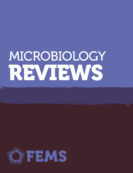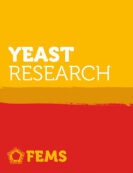Pathogens and Disease Oral Presentation Prize: Daniel Madiati
Congratulations to Daniel Madiati, who was awarded an Oral Presentation Prize at BacPath 15 by our journal Pathogens and Disease.
BacPath 15 was held in the Swan Valley, a spectacular and picturesque setting located near Perth Western Australia, from 30 September to 3 October 2019. BacPath is the Australian premiere biennial molecular bacteriology meeting that has an exclusive focus on bacterial pathogens. The meeting explores the full spectrum of molecular microbiology from fundamental research to translational applications.
Read our interview with Daniel about his research below:
What is your current position, and what was your scientific journey to get there?
Throughout high school I was fascinated by DNA – how this genetic molecule works and how we can use it to our advantage. This led me to pursue biomedical forensic science after school, although by 2nd year I decided that I was more inclined to biomedical research than the forensics/criminology side.
I started my research career working with Assoc. Prof. Iain Duggin during my Honours and PhD, where I focused on the regulation of cell morphology and division in uropathogenic E. coli. Our research involved various genetic screening approaches that have contributed to a better understanding of bladder infections.
Following the completion of my PhD in 2018, I undertook a postdoctoral research fellowship position with Dr. Jai Tree at the School of Biotechnology and Biomolecular Sciences, UNSW.”
Could you describe the research your presentation covered?
I presented our most recent results on the RNA interactome of methicillin-resistant Staphylococcus aureus (MRSA), which is a major cause of skin, soft tissue, respiratory and endovascular infections. The emergence of antibiotic-resistant bacteria, such as MRSA, has limited our treatment options to last-line antibiotics like vancomycin, yet populations of MRSA with intermediate levels of vancomycin resistance have emerged and are associated with treatment failure. These strains are associated with distinct physiological changes including cell wall thickening and reduced autolysis.
We have used UV crosslinking, ligation and sequencing of hybrids (CLASH) to profile the in vivo sRNA-mRNA interaction network and identify functions for regulatory sRNAs in a clinical MRSA isolate. One sRNA, here termed visA, exhibited severe vancomycin sensitivity when deleted. Vancomycin tolerance was restored in a ∆visA::visA chromosomal repair strain.
The identified VisA regulon includes both novel mRNAs and sRNA sponging interactions. One such mRNA interaction identified by CLASH was the lytic transglycosylase isaA involved in cell wall expansion and turnover. Knock down of isaA rendered cells vancomycin-sensitive resembling the DvisA strain. Finally, we showed DvisA has significantly decreased cell wall thickness when compared to wild-type, most likely contributing to the increased vancomycin sensitivity. These results demonstrate a novel mechanism of antibiotic tolerance through VisA sRNA regulation of isaA and cell wall turnover during antibiotic stress.”
What do you hope to focus your research on in the future?
In the immediate future, we are looking forward to fully elucidating the direct interaction mechanism between visA and isaA during vancomycin and other glycopeptide antibiotic treatments. We are then looking forward to discovering the regulatory RNA interactome of MRSA during other stressful conditions and infection-related conditions. This will build a better understand of the regulatory networks important for MRSA survival and virulence in the host.”
All but one of the FEMS journals are now fully open access (OA), with one journal, FEMS Microbiology Letters remaining a subscription journal with free-to-publish and OA options. Open access is key to supporting the FEMS mission of disseminating high quality research as widely as possible: when high quality, peer reviewed sound science is open access, anyone, anywhere in the world with an internet connection, can read it.







